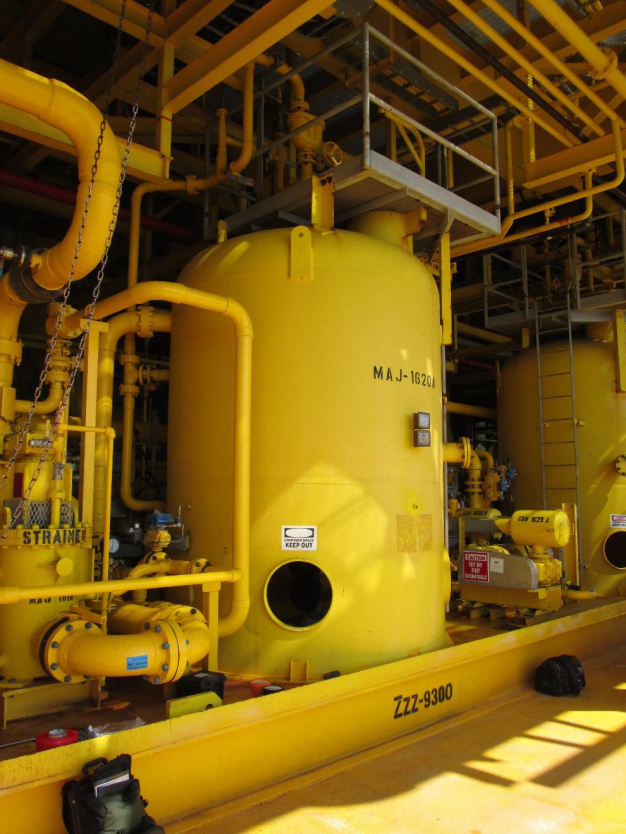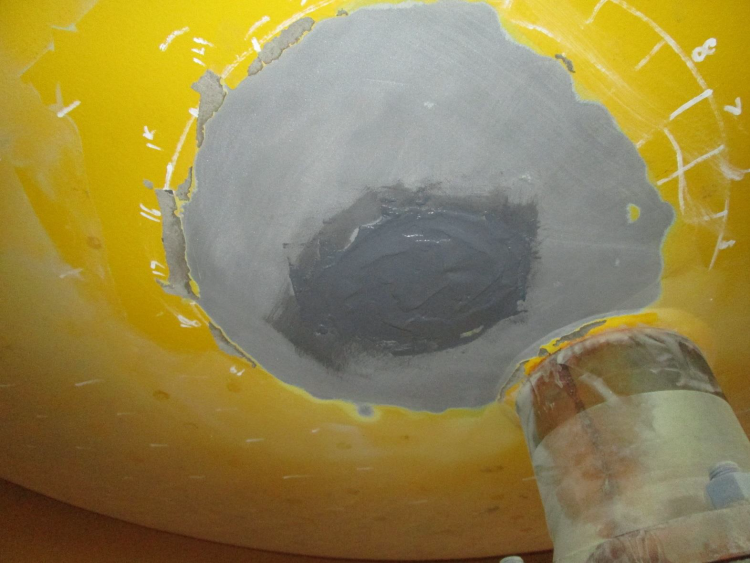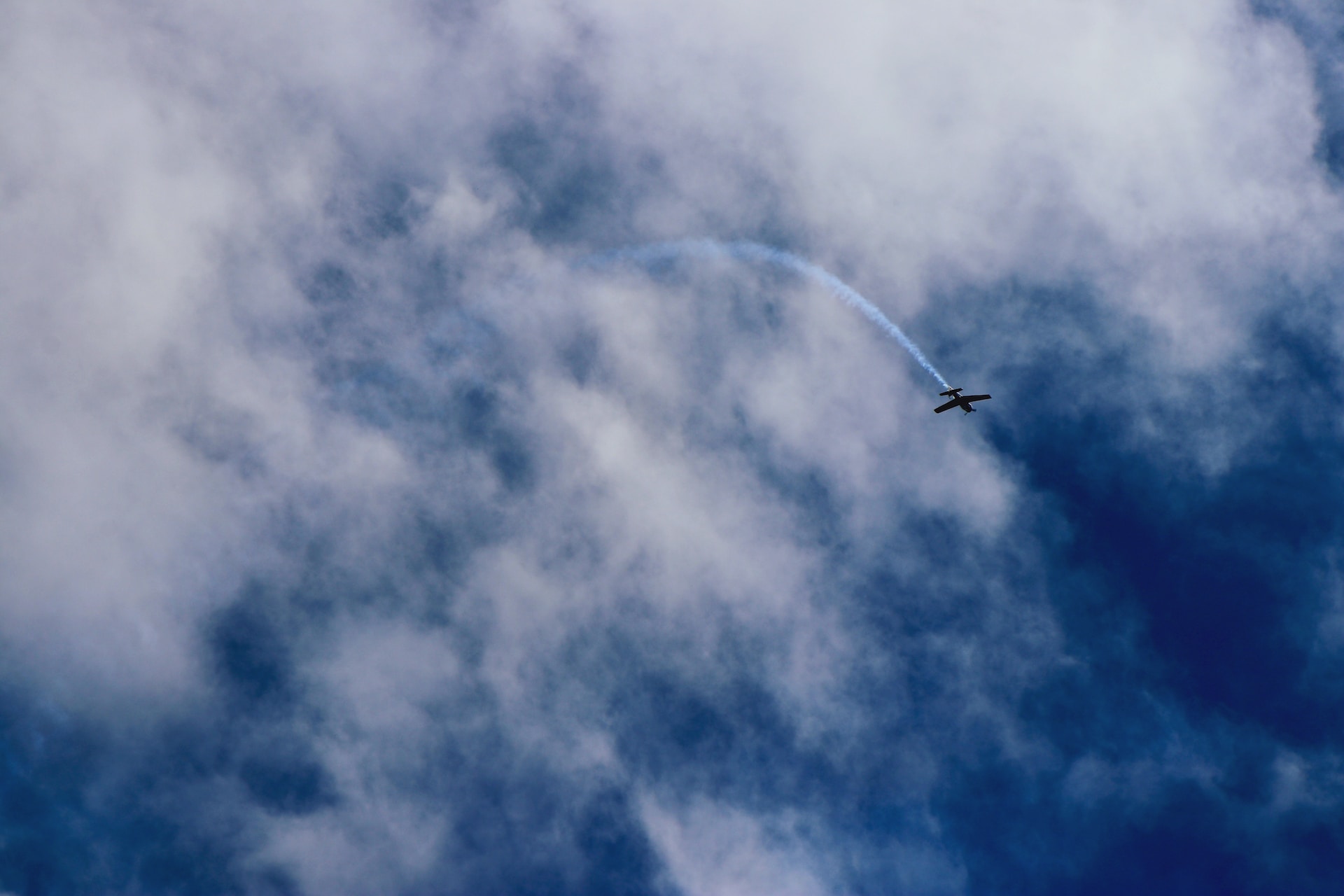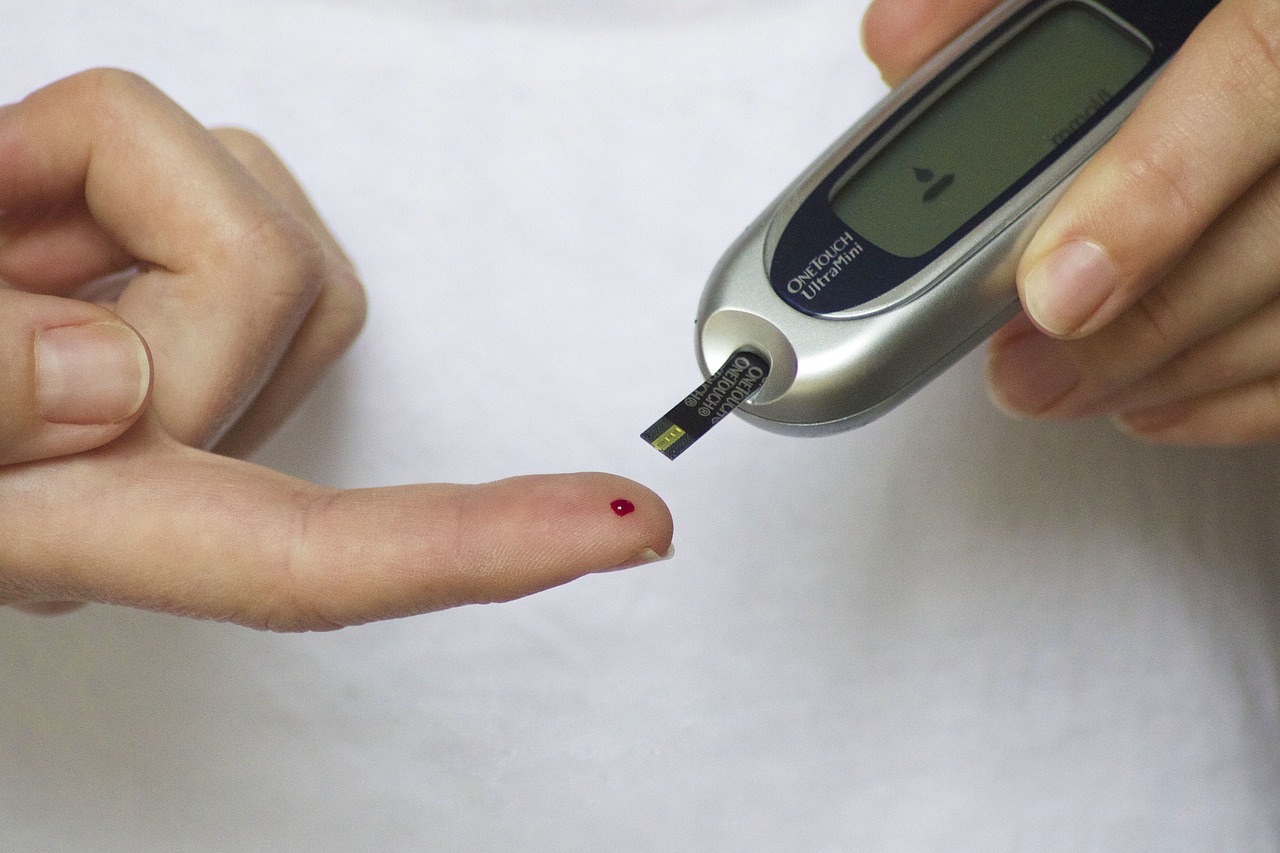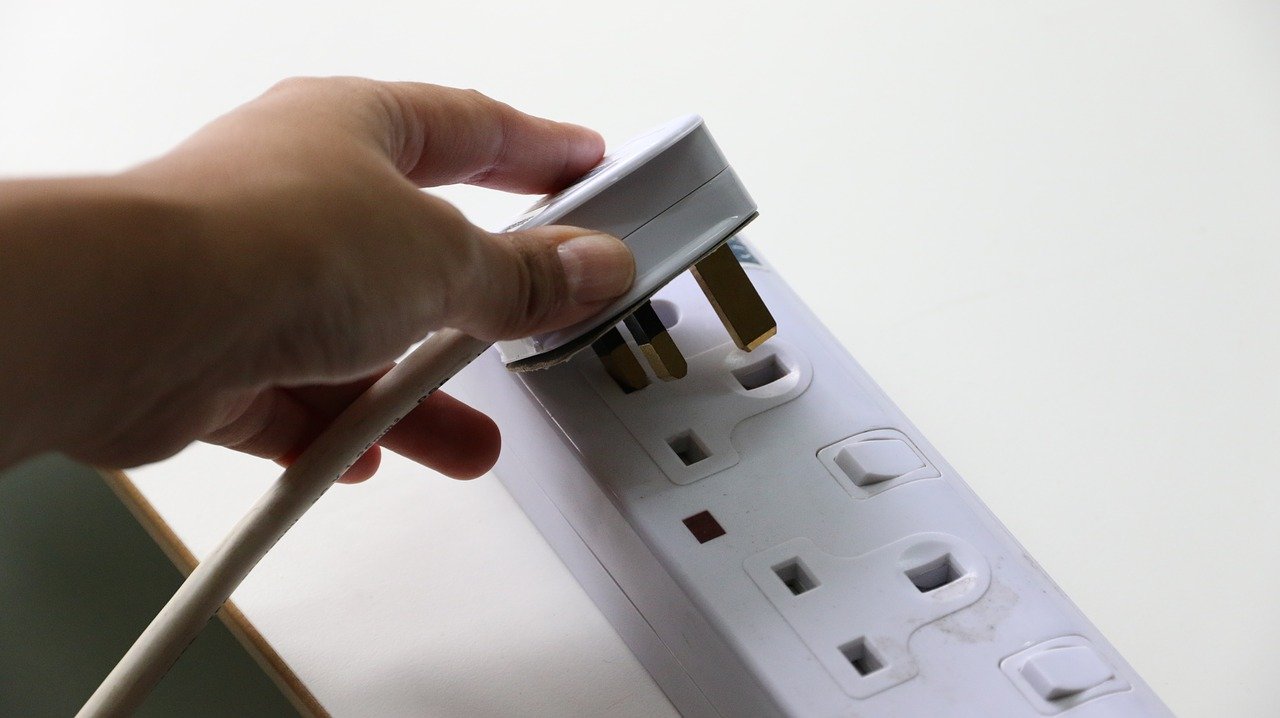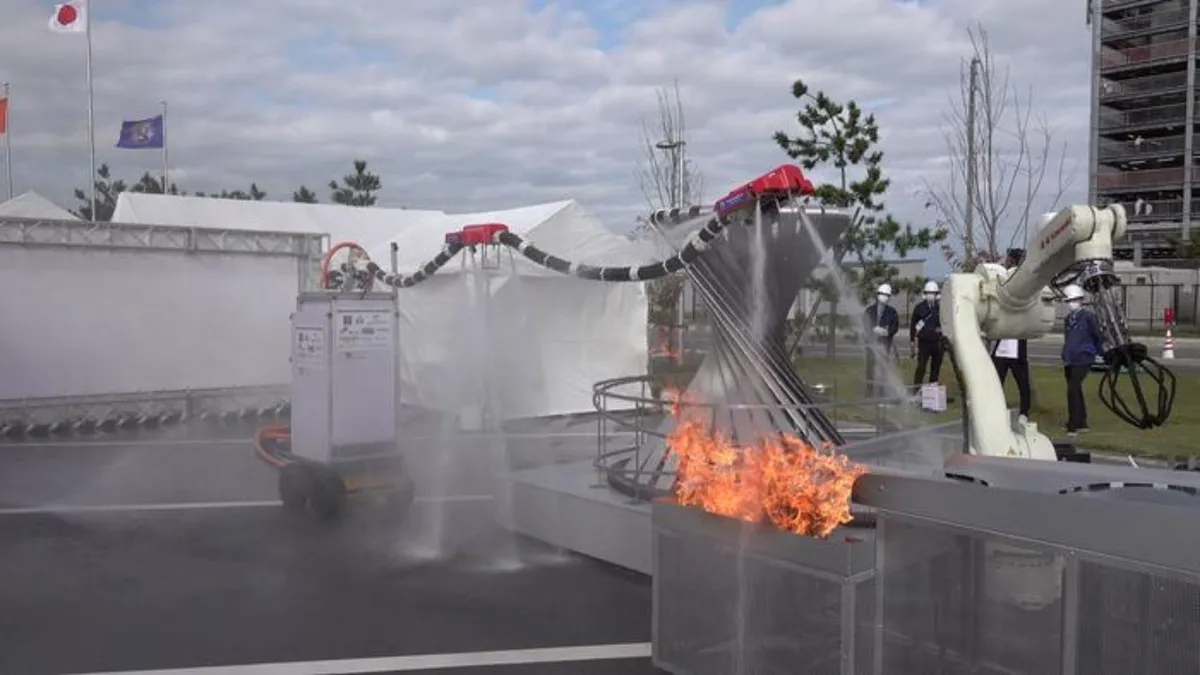During March 2015, an offshore Oil and Gas platform contacted Belzona requiring a unique solution for the repair of a seawater bulk media filter vessel. Located in the Gulf of Mexico, USA, the bottom of the vessel was suffering from external damage due to the heavily corrosive environment and seawater being transported. Furthermore, the damage involved a combination of both thin and through-wall defects, posing a repair dilemma without emptying the entire vessel’s contents.
In terms of functionality, seawater bulk media filter vessels simply remove the sediment and grit from the seawater pumped up to the platform. As the seawater enters at the top of the vessel, it passes through the bulk media, leaving the unwanted remains trapped in the beads of the media. Subsequently, this lean liquid is collected and drained for many uses that cover both on board and off board procedures.
Suspended particles in the seawater can cause continuous abrasion to the vessel lining, which in combination with the highly corrosive salt water, creates an extremely destructive environment. In this instance, it had caused the vessel to leak due to a failure of the underdrain system. Consequently, the asset owner decided to use a bolt to arrest the leak, until a permanent compliant solution was implemented. Following an investigation of alternatives, evidence suggested that competitor products were unable to provide a sufficient composite patch; therefore, the customer selected Belzona SuperWrap II to complete the repair.
After careful selection and supported by an engineered design, the application was carried out in compliance with ASME standards. At the outset, the bolt plugging the hole was removed, allowing the remainder of the filtered water to be drained and complete access to the defected area.
The through-wall defect was plugged first using Belzona 1291 (ES-Metal), a malleable epoxy compound that was shaped to fit the prescribed affected area. Highly adhesive and water resistant, the compound provided an excellent temporary solution to stop the vessel’s leak. The original vessel coating was then removed by hand sanding before the carbon steel substrate’s thin and through-wall failings were rebuilt with Belzona 1212. Designed to adhere to wet, oil contaminated, and underwater substrates, this surface tolerant material was the most suitable repair solution for the aqueous environment.
Following the thin and through-wall repair, the substrate was then cleaned to the requirements of SSPC SP 10 (Near-White Metal) by abrasive blasting. In reference to the design, three wraps (6 layers) of Belzona SuperWrap II were applied to the repair area to reinforce the bottom of the filter vessel. This composite wrap was chosen because of its application versatility and proven efficiency with repairing weakened and holed tank walls. Using Belzona 1121 (Super XL-Metal) epoxy resin to create a mould of the vessel’s surface, the Belzona SuperWrap II repair was consolidated by applying pressure against the template, creating a secure and tight seal around the defect.
The customer chose Belzona SuperWrap II because of the long design life and overall ease of the repair process versus traditional welding methods, which can incur a number of health and safety issues. By using a composite patch they were able to avoid emptying the entire vessel, including filter media, hence saving a considerable amount of downtime and labour.
Tom Belli, Belzona Polymerics Ltd

